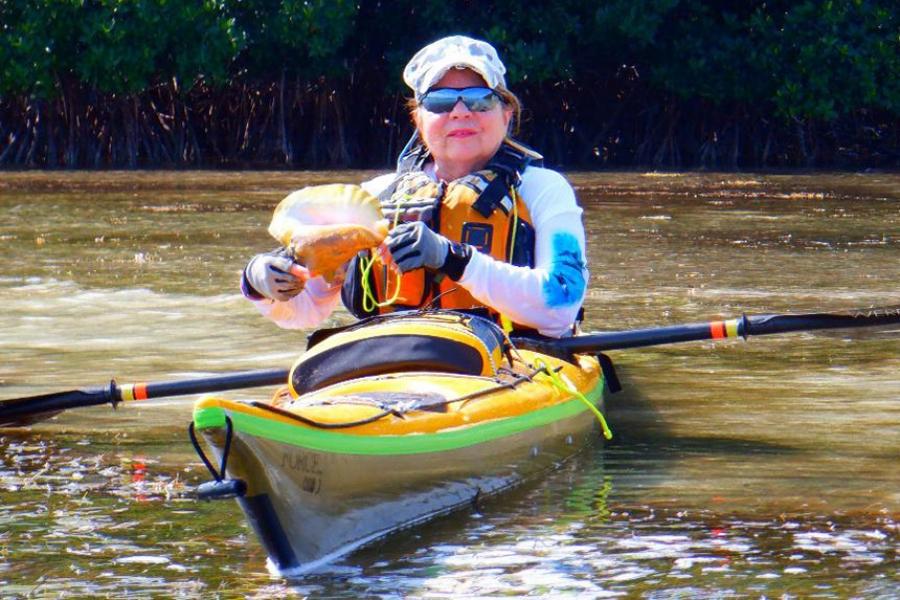“Kayaking is my happy place,” says retired school secretary Linda Horton. That includes kayaking under sunny skies on quiet Lake Mahopac in Putnam County, New York, where Horton lives, but also much more.
“I kayak lakes, rivers, sounds and bays throughout the New England area,” she explained. And, since Horton’s retirement in 2014 after 25 years of service — the last 18 at Cardozo HS in Queens — she has kayaked in the Florida Keys, up and down the Eastern Seaboard and all the way up to the Bay of Fundy in Canada for a three-day kayak symposium.
Horton is also an instructor. She earned an American Canoe Association grade level 2 kayak instructor certificate after what she describes as “a long, tough process” that was “well worth it.” At each level, the instruction for certification included three eight-hour days on the water and homework each day to meet a high standard of paddling, rescuing and teaching.
“It is not enough to prove you can meet the standards,” she said. “You have to also be able to clearly teach others.”
Her husband is also an ardent kayaker. They travel through the water together, but in separate, one-person kayaks. Horton calls two-seat kayaks “divorce makers.”
Before the pandemic shut down travel, Horton and her husband would head to warmer climates when winter curtailed kayaking in the north. They have paddled their way around the Galapagos Islands, Baja, Hawaii, Costa Rica and Belize. They are members of Kayaking Liquid Skies, which attracts kayakers within a 150-mile radius of Lake Mahopac. Since the pandemic began, the groups on their kayaking trips are smaller and members are masked when on land for launchings, lunch and landings. “COVID has definitely affected us,” Horton said.
Horton decided to become an instructor because she realized the importance of knowing how to rescue yourself and others when kayaks capsize as they so often do.
“In kayaking, it’s not if but when you fall in, and everybody does,” she pointed out. “So it’s important you know what you’re doing when faced with sudden challenges.”
Horton cautions beginning kayakers: “There’s so much you need to know, and it’s not just about using your arms.” She teaches them how to move the kayak with ease, about torso rotation, when to push paddle and when to pull, when to push with your feet and how the whole body is engaged. Of special importance is teaching them how to get back into a kayak after it capsizes and how to help others do so because water temperature is always colder than air temperature and it’s important to get out of cold water quickly.
There is also a lot to learn about kayaks. Some are designed for recreation, some for fishing, some for calm water and others for open seas. There are kayaks with seats inside and those where you sit on top of the kayak. Horton and her husband own a variety.
Horton remembers a recent group outing on the Hudson River that launched from Beacon and began peacefully. Several hours later, when it was time for the return trip, the river conditions had changed. The wind was growing stronger and blowing in the opposite direction of a swift moving current. “You never know on the Hudson,” Horton said. “Each trip is different, and each presents its own challenge.”
Horton loved kayaking the first time she tried it. She bought her own kayak right away. When she was working as a school secretary, kayaking was for weekends and summers. But now, she says it’s been “glorious” spending more time on the water and, until the pandemic, traveling the world in a kayak.
